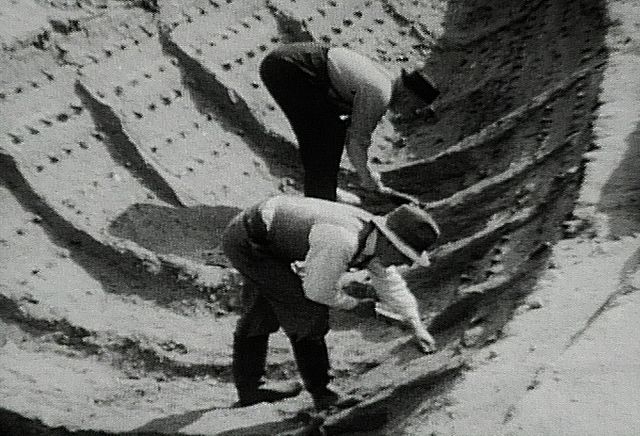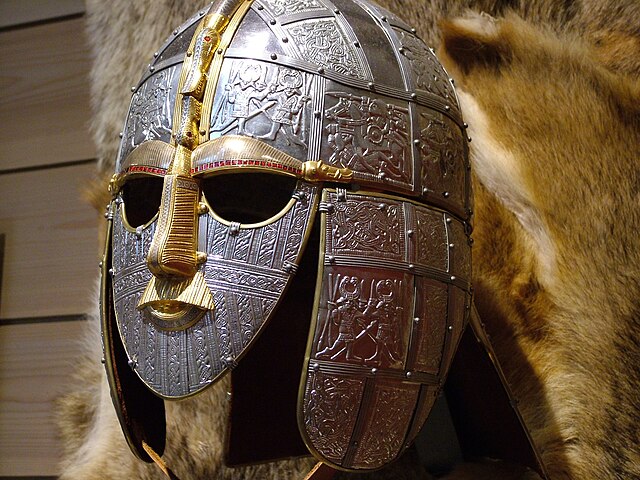The Sutton Hoo helmet is a decorated Anglo-Saxon helmet found during a 1939 excavation of the Sutton Hoo ship-burial. It was buried around the years c. 620–625 CE and is widely associated with an Anglo-Saxon leader, King Rædwald of East Anglia; its elaborate decoration may have given it a secondary function akin to a crown. The helmet was both a functional piece of armour and a decorative piece of metalwork. An iconic object from an archaeological find hailed as the "British Tutankhamen", it has become a symbol of the Early Middle Ages, "of Archaeology in general", and of England.
The ship impression during the 1939 excavation; Basil Brown is in the foreground, and Lieutenant Commander John Kenneth Douglas Hutchison in the background.
A replica helmet showing designs 1, 2, 4 and 5, located (1) above the eyebrows and on the cheek guard, (2) on the skull cap, (4) on the cheek guard and skull cap, and (5) on the face mask
One of the four Torslunda plates, showing a horned figure similar to those in design 1. His missing right eye suggests that he is Odin.
The Pliezhausen bracteate shows a scene nearly identical to design 2.
Rædwald, also written as Raedwald or Redwald, was a king of East Anglia, an Anglo-Saxon kingdom which included the present-day English counties of Norfolk and Suffolk. He was the son of Tytila of East Anglia and a member of the Wuffingas dynasty, who were the first kings of the East Angles. Details about Rædwald's reign are scarce, primarily because the Viking invasions of the 9th century destroyed the monasteries in East Anglia where many documents would have been kept. Rædwald reigned from about 599 until his death around 624, initially under the overlordship of Æthelberht of Kent. In 616, as a result of fighting the Battle of the River Idle and defeating Æthelfrith of Northumbria, he was able to install Edwin, who was acquiescent to his authority, as the new king of Northumbria. During the battle, both Æthelfrith and Rædwald's son, Rægenhere, were killed.
A replica of the Sutton Hoo helmet, the original of which may have belonged to Rædwald
Early stained glass from Osmondthorpe, representing Rædwald, king of the East Angles (Gott Collection)
The excavation of the Sutton Hoo burial ship in 1939
The Great Buckle from Mound 1 at Sutton Hoo, now on permanent display at the British Museum.







